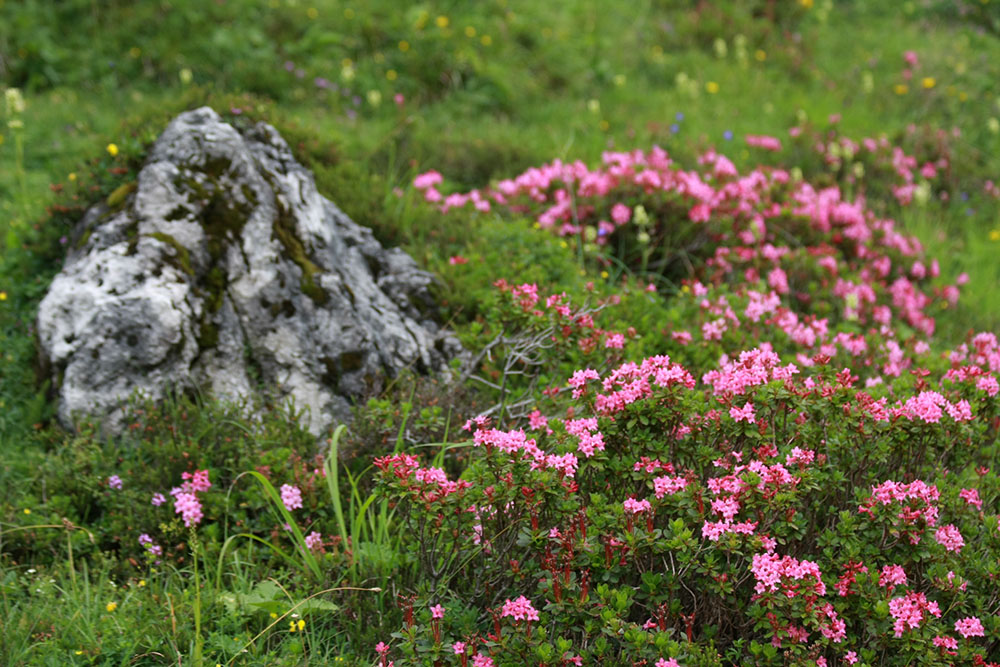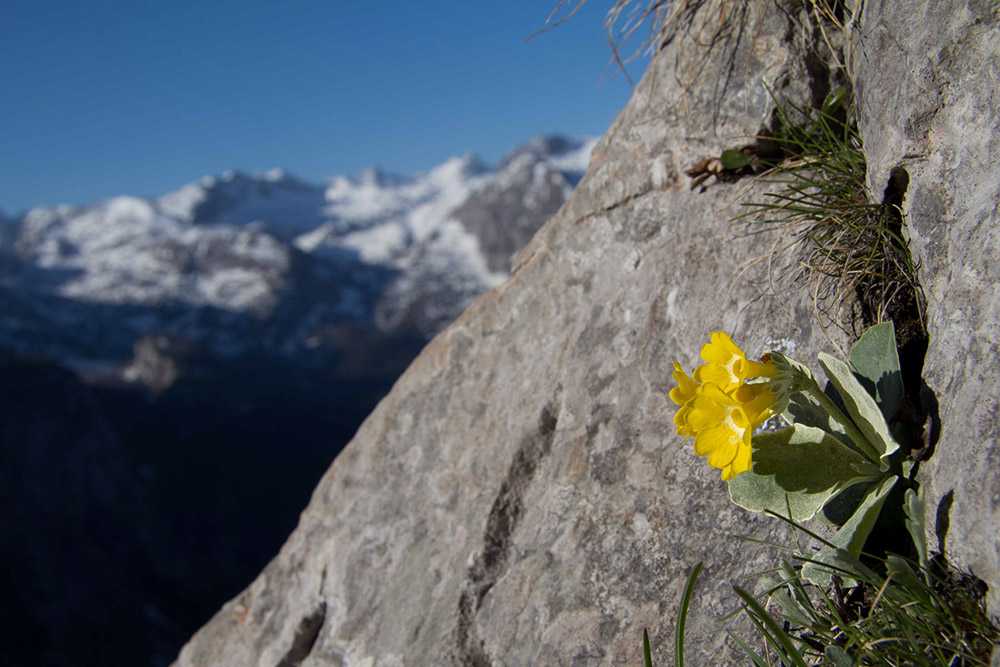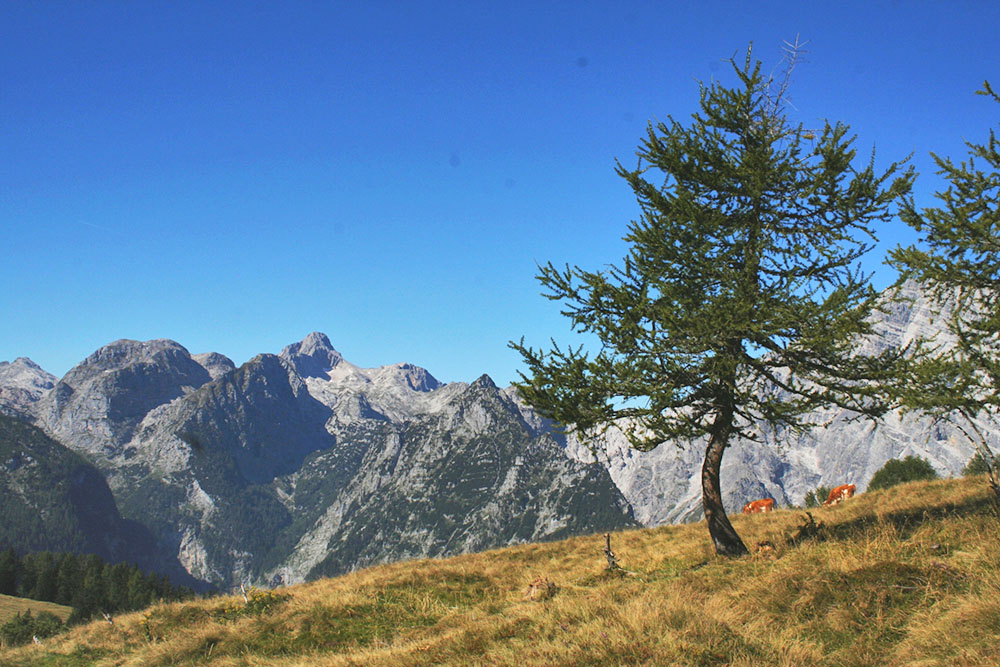Flora
Only remnants of the once natural mixed mountain forests with spruce, larch, beech and a high proportion of fir have been preserved, for example in the Königsseetal, due to centuries of saline farming and excessive game populations. At the time of the national park's founding, spruce-dominated stands grew over a larger area due to historical use. An important task of the national park in the maintenance zone is the conversion of the pure spruce stands into natural mixed mountain forests. In many areas of the hunting grounds Königssee, Hintersee and Au-Schapbach this has already been achieved!

Alpine Rose
A special feature are the yew trees on the steep lake walls of Lake Königsee as remnants of a yew-beech forest. According to the varied relief, different azonal societies are also widespread: Block and slope debris forests, ravine forests, small areas of riparian and swamp forests. Another special feature are the extensive stands of mountain pines on the dolomite gravel of the Wimbachgries, some of which show conspicuous tree-like growth. In the Klausbach valley there are also larger stands of juniper and Scots pine.

Alpine auricle
Alpine pastures of the submontane to high montane stage occupy a total area of about 880 ha. Alpine rough pastures and borstgrass meadows dominate, followed by species-rich extensive grassland. Base-rich dry and semi-dry grasslands occur in small areas. Borstgras grasslands are particularly characteristic of the areas east of Lake Königsee: here, acidic soils have developed over marly weathering Liassic limestones. These pastures, formed by thousands of years of livestock farming, are often intersected with tall herbaceous vegetation and merge with the altitudinal gradient into alpine grasslands. The lawns of the high altitudes are mostly of the bluegrass type on the calcareous parent rock.
Wherever terrain depressions have been sealed by clayey or silty fine sediment, a variety of small-scale bog types have developed: from fens to transition bogs to raised bogs. From the point of view of vegetation and floristics, they harbor special rarities. A special feature is the Saletstock: a peninsula that juts into the Königssee. Only a narrow water channel overgrown with beak sedge separates it from the "mainland". In the interior of the peninsula, a high moor-like vegetation with peat mosses has developed.

Plateau with larch
The botanical species inventory from the Berchtesgaden National Park:
Status from the -1980s and 1990s respectively
- over 900 securely detected vascular plant species (with the unsecured detections over 1100 vascular plants)
- About 500 mosses
- About 640 lichens
- About 2000 mushrooms